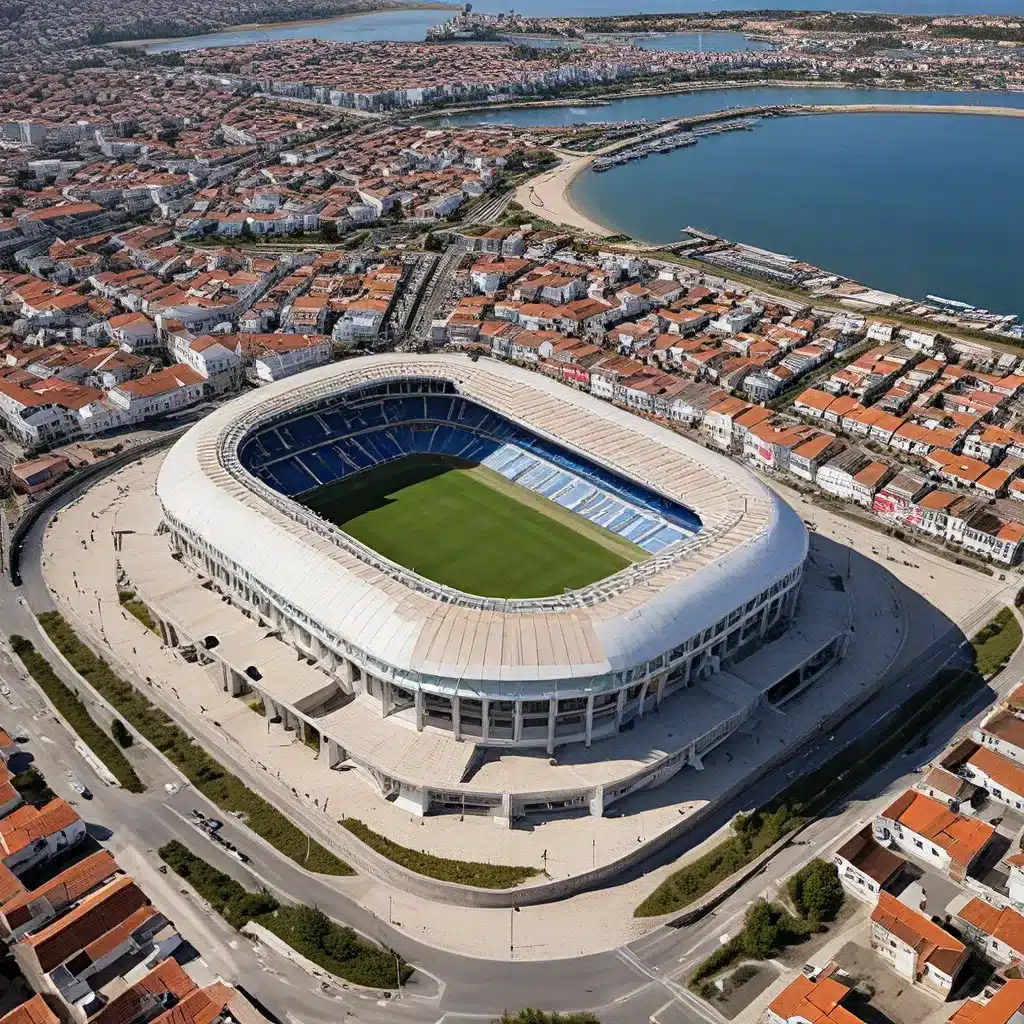
The Legacy of EURO 2004 in Portugal
In the summer of 2004, Portugal had the honor of hosting the European Football Championship, or EURO 2004. This prestigious event led to the construction of some of the country’s most well-known and iconic stadiums, including the Estádio Municipal de Aveiro.
The decision to host EURO 2004 was a bold one, as it required a significant investment in stadium renovations and new constructions to accommodate the influx of visitors. However, for the Portuguese people, who are deeply passionate about football, this was an opportunity to showcase their love for the sport and the country’s ability to host a major international event.
The Estádio Municipal de Aveiro: A Modern Marvel
The Estádio Municipal de Aveiro, located in the city of Aveiro, often referred to as the “Portuguese Venice,” is one of the stadiums that was built specifically for EURO 2004. This impressive stadium has a seating capacity of more than 32,000, including exclusive seats for the press, making it the fifth-largest stadium in Portugal.
The stadium’s architecture is a testament to the country’s commitment to creating modern and visually stunning venues. Designed with a colorful and contemporary aesthetic, the Estádio Municipal de Aveiro stands out among its peers. Its steel structure and white and blue color scheme pay homage to the nearby ocean, reflecting the stadium’s harmonious integration with its surrounding environment.
The construction of the Estádio Municipal de Aveiro cost around 62 million euros, a significant investment that has paid dividends in the years since its completion.
The Stadium’s Ongoing Legacy
Even though the EURO 2004 tournament has long since concluded, the Estádio Municipal de Aveiro continues to play a vital role in the local community and the Portuguese football landscape. The stadium is regularly used by the local teams for their home matches, providing a modern and well-equipped venue for the city’s passionate fans.
But the stadium’s significance extends beyond just football. It has also hosted a variety of cultural events, such as concerts, further solidifying its place as a centerpiece of Aveiro’s vibrant cultural scene. The stadium’s versatility and adaptability have made it an essential asset for the city, capable of accommodating a wide range of activities and events.
Architectural Marvels Across Portugal
The Estádio Municipal de Aveiro is not the only remarkable stadium built for EURO 2004. Across Portugal, the country showcased its architectural prowess by constructing several other iconic stadiums, each with its own unique design and character.
For example, the Estádio Algarve, located in the southern region of Algarve, boasts a modern steel structure with white and blue colors that evoke the nearby ocean. The Estádio da Cidade de Coimbra, on the other hand, features a metal and glass structure that stands in contrast to the traditional oval shape of most stadiums.
The Estádio Municipal de Braga, known as “A Pedreira,” is particularly noteworthy for its integration with the natural landscape, with its metal structures seamlessly blending into the surrounding environment. Meanwhile, the Estádio Dr Magalhães Pessoa in Leiria is characterized by its harmonious waves, creating a visually stunning and architecturally unique structure.
Embracing the Past, Shaping the Future
The Estádio Municipal de Aveiro, along with the other EURO 2004 stadiums, not only serve as a testament to Portugal’s passion for football but also represent the country’s commitment to embracing the past while shaping the future. These stadiums have become iconic landmarks, not just for the sport they host but for their architectural excellence and cultural significance.
As the Portuguese people continue to celebrate their love for football and their national teams, these stadiums will undoubtedly remain at the heart of their sporting and community life. They serve as a tangible reminder of the country’s rich football heritage and its willingness to invest in the future, creating spaces that inspire and captivate both local and international audiences.
Conclusion
The Estádio Municipal de Aveiro, with its striking design, modern amenities, and enduring legacy, stands as a prime example of Portugal’s ability to seamlessly blend the past and the future. This stadium, along with its counterparts across the country, has become a source of national pride, showcasing the nation’s commitment to excellence and its deep-rooted passion for the beautiful game.
As visitors and sports enthusiasts alike explore the Estádio Municipal de Aveiro and the other EURO 2004 stadiums, they will undoubtedly be captivated by the architectural wonders, the vibrant atmosphere, and the enduring spirit that these venues embody. These stadiums are not just about football – they are a testament to Portugal’s unwavering dedication to creating spaces that inspire, entertain, and bring people together.

